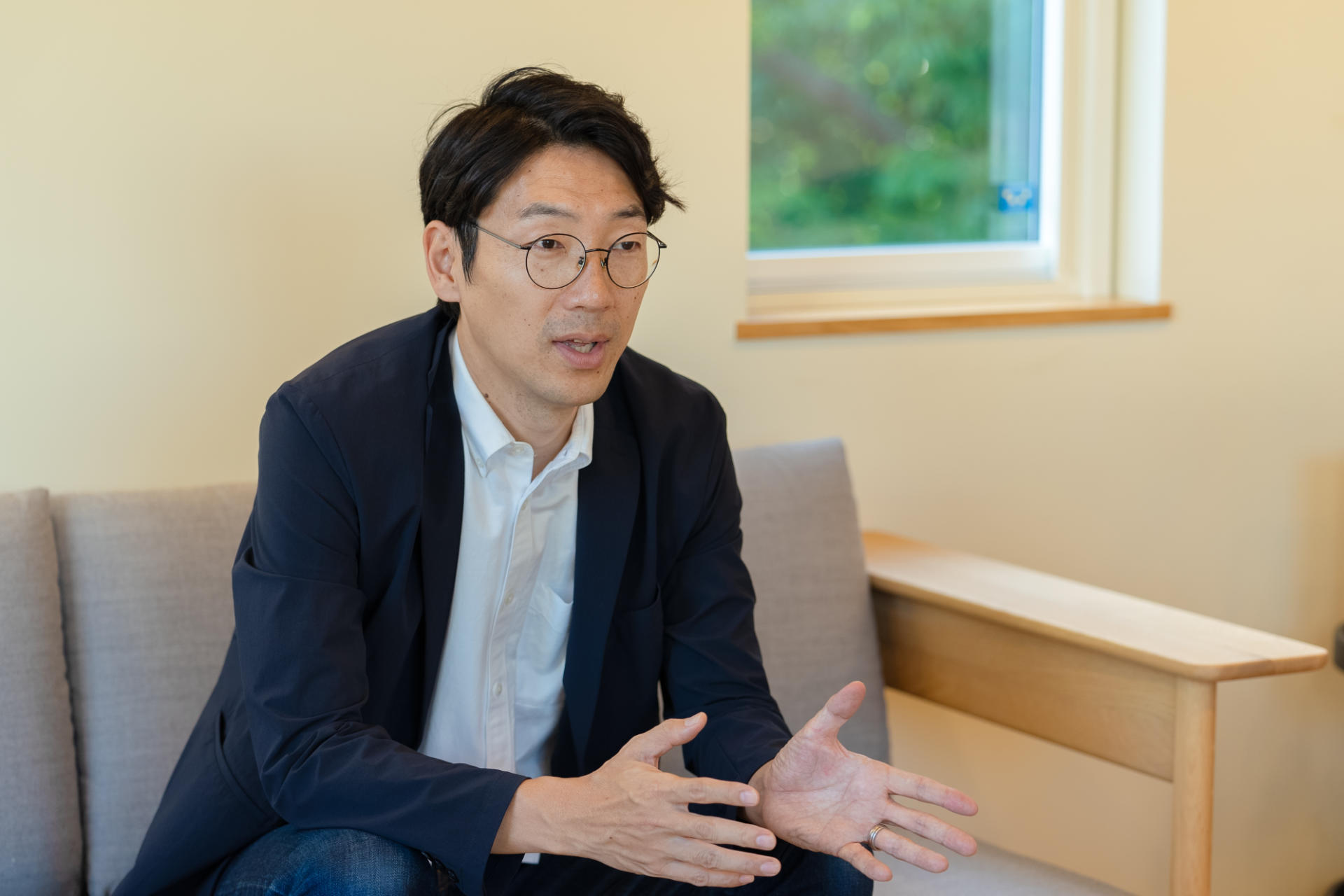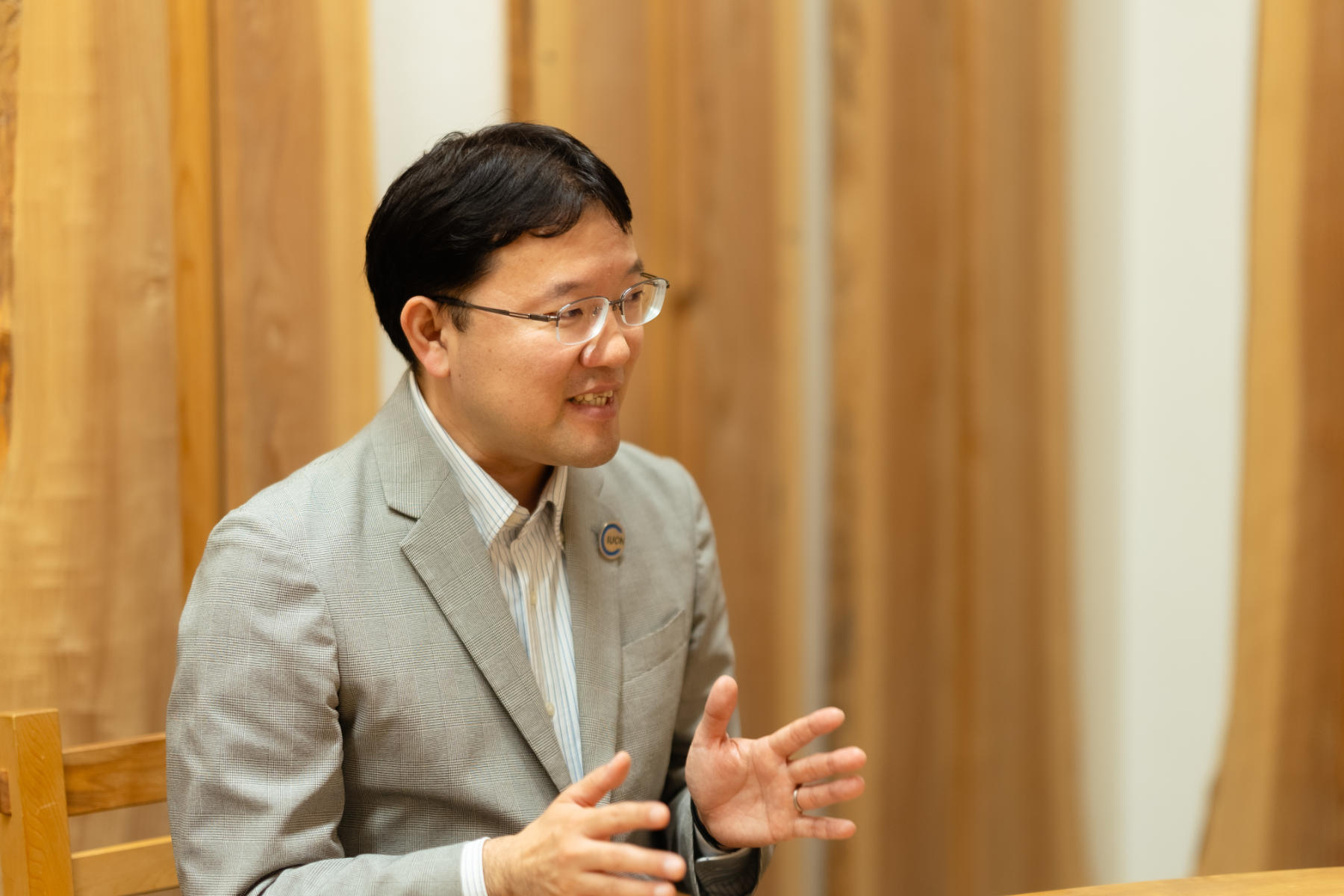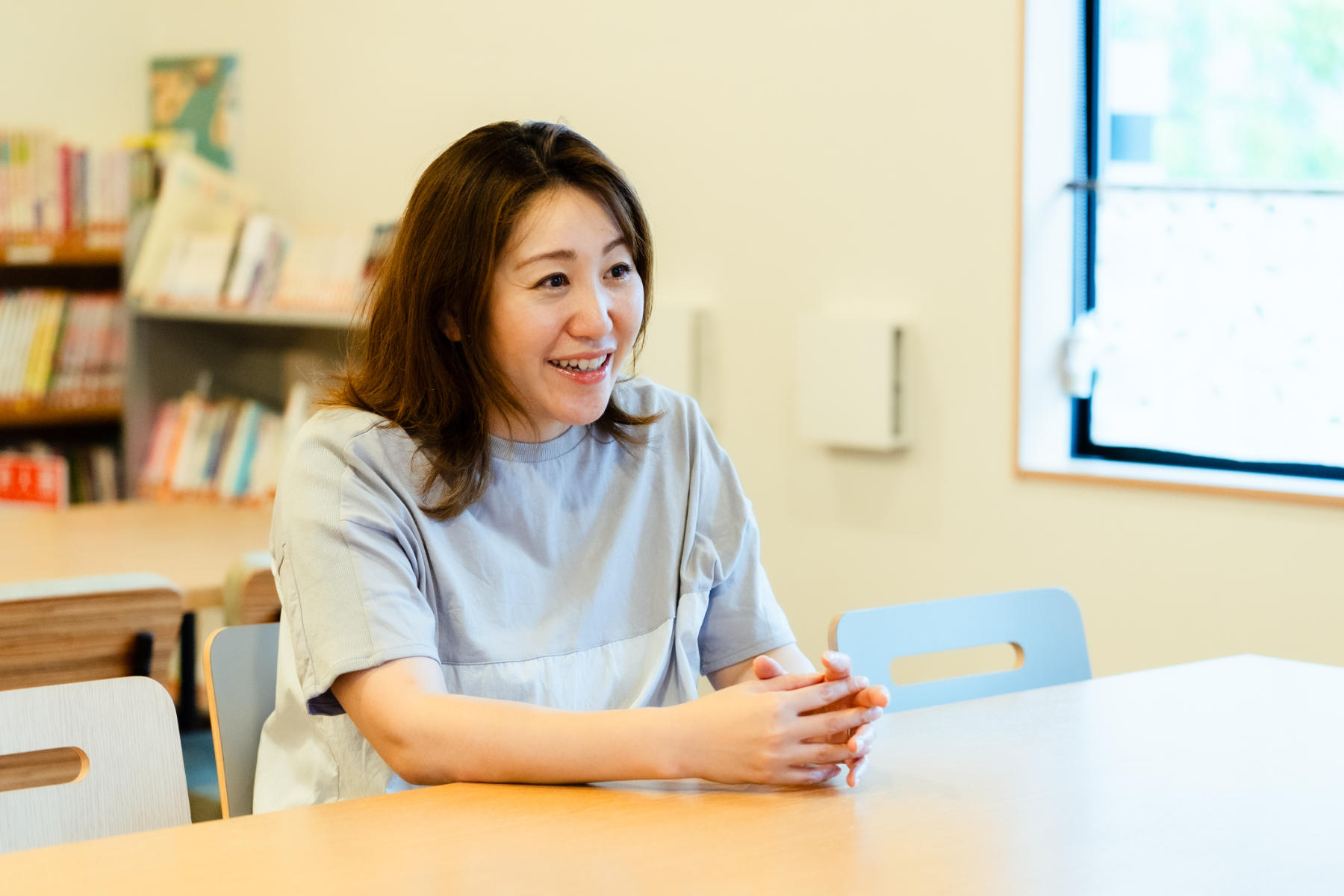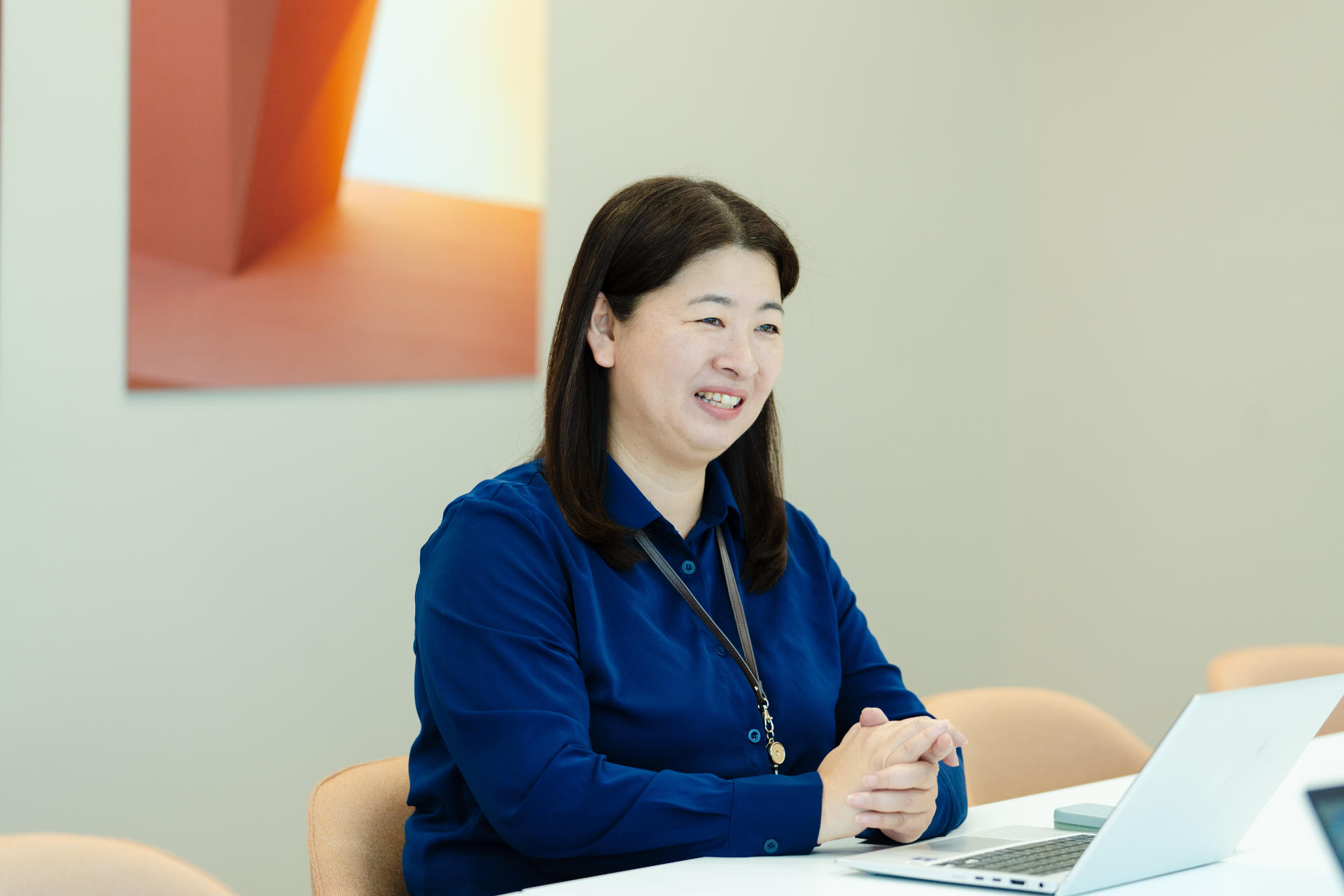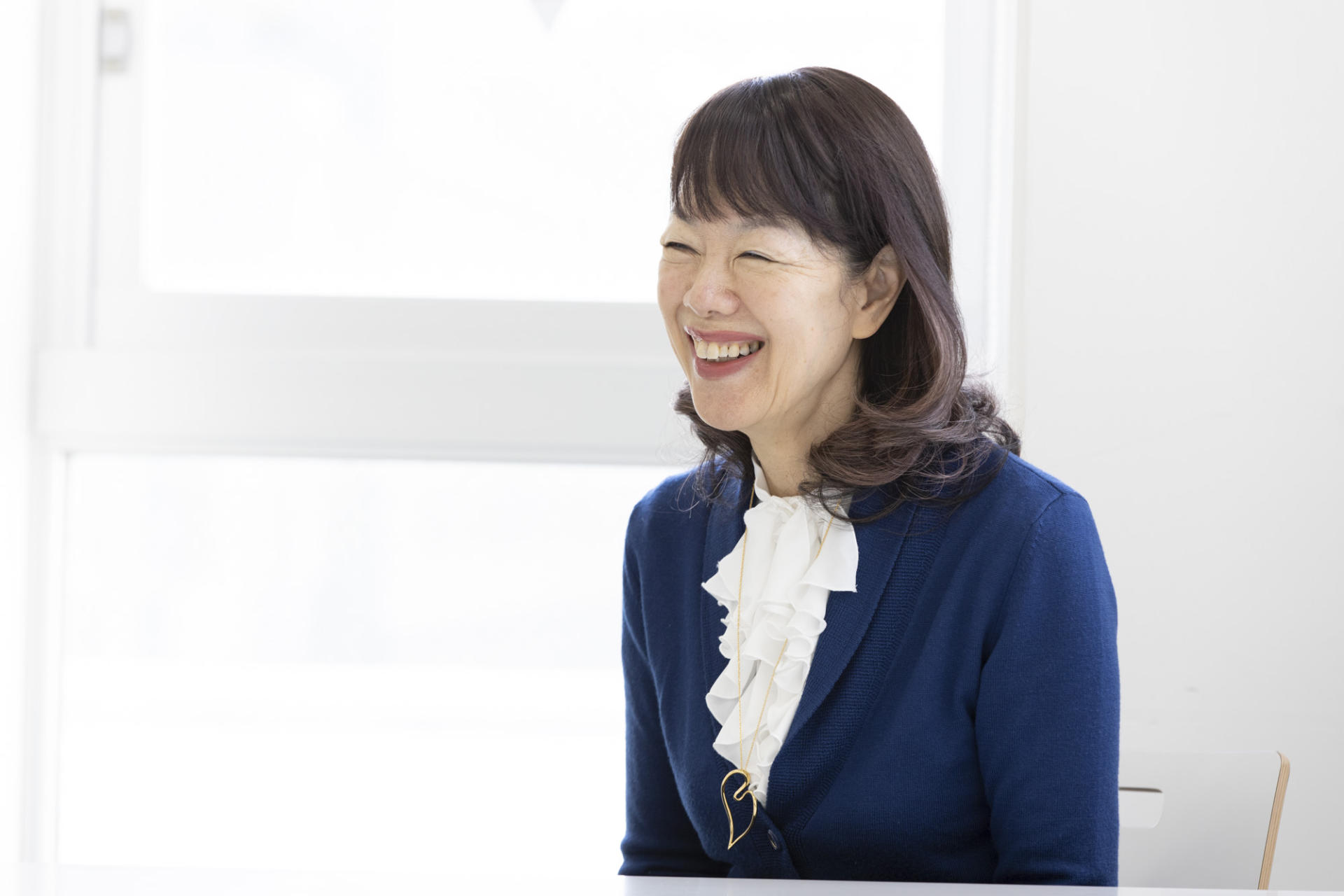CASE 19
General Incorporated Foundation for Promoting Sound Growth of Children
(April 2019 to Present)
Redesigning the website for the Foundation for Promoting Sound Growth of Children, an organization that supports children’s centers across the country
With the same goals in mind, we supported efforts to extensively communicate the significance of children’s centers
The Foundation for Promoting Sound Growth of Children (hereafter “Growth Foundation”) is an organization which supports the approximately 4,500 children’s centers across Japan. Hitoshizuku has been providing logistical support for this organization since 2018. Recently we were given the opportunity to update websites and brochures which outline the Growth Foundation’s role as well as children’s center activities. We looked back over the rebranding process, from listening closely to potential issues confronting the Growth Foundation to carefully creating materials, and ensuring a common understanding between all people involved.
Creating a mission statement which verbalizes the driving force behind children’s centers with the goal of achieving common understanding
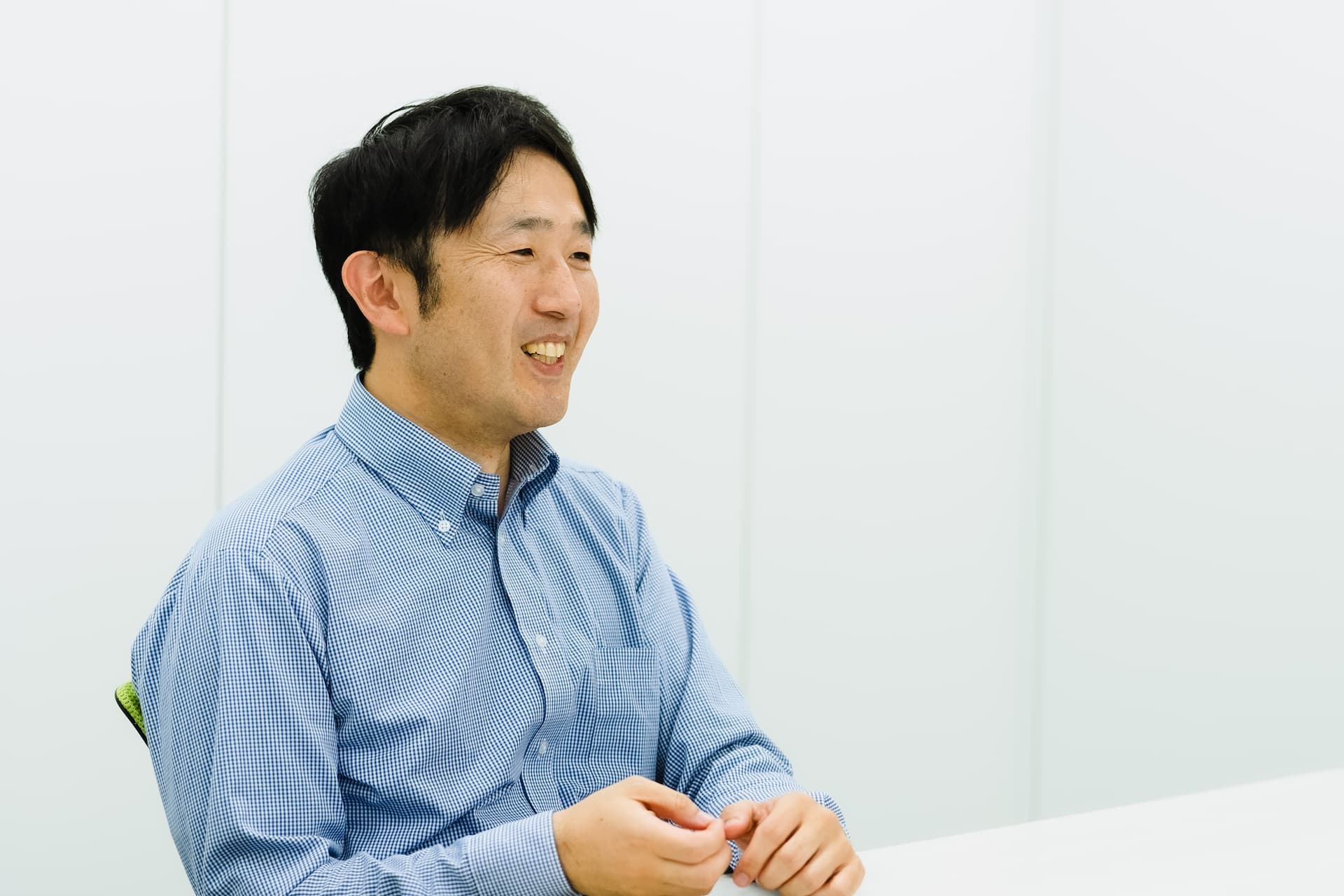
Ryo Nataami, General Incorporated Foundation for Promoting Sound Growth of Children
Mami Kaneko, Hitoshizuku (Kaneko):
We provided logistical support for the Foundation for Promoting Sound Growth of Children (Growth Foundation) by updating the foundation’s website, the KodomoNext website which provides information about children’s centers and children’s clubs, as well as updating pamphlets about the Growth Foundation and children’s centers. Could you tell us again what issues you were aware of at the point you decided to contact Hitoshizuku?
Ryo Nataami, General Incorporated Foundation for Promoting Sound Growth of Children (Mr. Nataami):
To start, the reason we asked for help updating our website was because the previous site had been made over 10 years ago and the design felt dated. The overall composition of the site was such that we would add new pages every time we updated the information which made it very difficult to navigate. More and more people were contacting us saying that they wanted to learn more about the Growth Foundation but they didn’t know where on the website to look, or that they didn’t know what a children’s center was in the first place. We decided we needed a website that conveyed this information in a more understandable manner.
At the same time, we also decided to have our brochure updated since we felt it was necessary to rebrand with a more unified image that could be used in a variety of business situations. That background, and the fact that Hitoshizuku had already been providing support to the Growth Foundation, was what led us to request your assistance.
Kaneko:
When we heard about updating each of your organization’s tools, we proposed starting with a mission statement that succinctly described what a children’s center does. We asked Michio Takeda, a copywriter, to join our design team to help accomplish this. What did the Growth Foundation and children’s center staff members think about the statement?
Mr. Nataami:
Before composing the statement, Mr. Takeda actually worked as a volunteer staff member in order to deepen his understanding of what a children’s center is. I think he was able to use that experience to create something that captured the essence of children’s centers. It’s been a while since the mission statements were distributed, but I hear that most centers still have the statement displayed inside.
Kaneko:
That’s great to hear. Mr. Takeda told me that being a former children’s center user himself allowed him to think about the project from a more familiar viewpoint.
Mr. Nataami:
In addition to the children’s center mission statement, we also had him create a slogan for the Growth Foundation pamphlet. As an organization, we’d never thought about a slogan before. Before making the request, we tried to come up with something on our own, but we just couldn’t seem to find the right words. That was when, at Hitoshizuku’s suggestion, we brought the Growth Foundation staff members together and held a workshop where they could interact with members of the design team. This was a great suggestion because you were able to incorporate the words and feelings that came out of that workshop into the statement of purpose.
Our work is difficult to sum up in a single word or phrase, but in order to expand the presence of children’s centers it’s important that we’re able to articulate the support for these centers that the Growth Foundation provides. That’s exactly why I feel like the slogan is a powerful tool that can be used to represent our organization. Personally, I particularly liked, “Play time at the usual place, for children.”
Kaneko:
In addition to Mr. Takeda’s work as a copywriter, for this project we had the web director from Keaton Co., Ltd, Mr. Hirotatsu Kuwayama and designer Ms. Mizuho Hara visit a children’s center in order to better design a website that reflects the unique atmosphere of the centers. I think this was a valuable opportunity for the design team to learn more about the importance of children’s centers and the affinity the staff members have for the children who visit.
Mr. Nataami:
I’m very happy that the design team had a chance to better understand the children’s center.

Left: Ryo Nataami, General Incorporated Foundation for Promoting Sound Growth of Children
Right: Kaneko, Hitoshizuku
We had the opportunity to organize the information from, what was to an outsider, a complex, two-website system into an updated site that left everyone satisfied
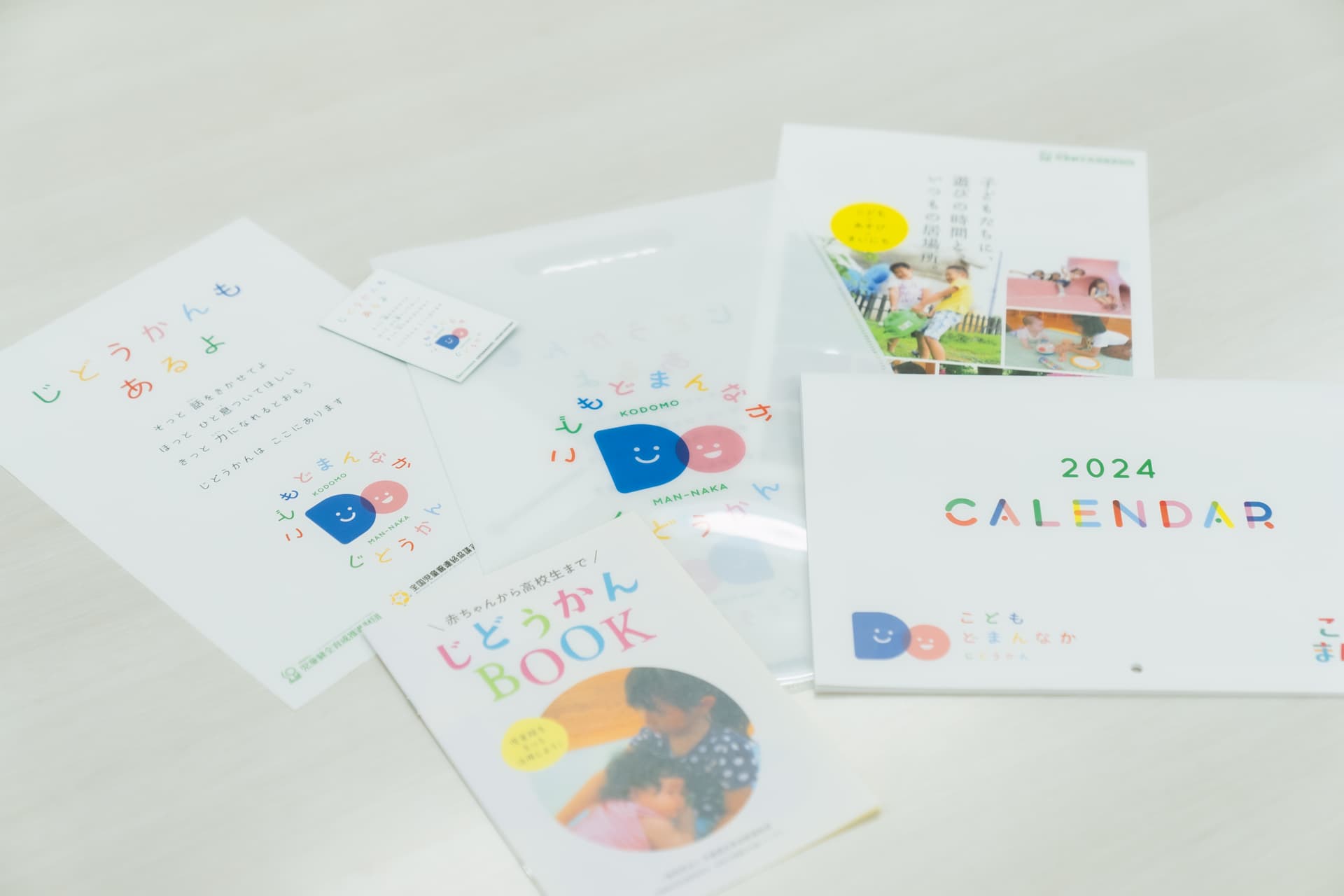
HITOSHIZUKU supported the production of PR tools such as the logo for the campaign and pamphlets for the children’s center.
Kaneko:
We’ve gone over the process of understanding what a children’s center is and does, but once we actually started the process of updating the website, were there any issues you noticed?
Mr. Nataami:
I think we struggled the most over the division of the Growth Foundation and KodomoNext websites. We had the Growth Foundation website designed for foundation members, administrators, and businesses, while the KodomoNext website was designed more for guardians, children’s center staff members, and other general readers. We debated over what information to include in which site, but under Hitoshizuku’s direction I think the design team was able to skillfully address the issue.
Kaneko:
Thank you. To be honest, organizing the complex information from both sites was something we struggled with at times as well.
Mr. Nataami:
This is something that has confused our own staff members, but I think Hitoshizuku demonstrated a great understanding of the composition of the websites in your proposal. An outsider’s viewpoint is always the most clear, and I think you were able to calmly, and boldly, make some decisions for us. If there’s something to improve on, it would be the fact that the budget didn’t allow us to move the “Game King” page that ranks the games the children play at the centers to the new website because the page structure was overly complex.
Kaneko:
You’re right, the “Game King” page is something we’d like to address at a later date. What did you think about the pamphlet design for the Growth Foundation and the children’s centers?
Mr. Nataami:
I think public relations in local communities is crucial for children’s centers. Setting aside whether one uses or doesn’t use a children’s center, we want local residents to know that there’s a children’s center in their area, so having something that can be distributed alongside other town advertisements is important. The “Children’s Center BOOK” is something that we hope will play an active role with local municipalities and be distributed at all over, from festivals to pediatricians’ offices.
Kaneko:
The “Children’s Center BOOK” and the updated Growth Foundation pamphlet can also be downloaded from links we set up on the Growth Foundation’s website. Hopefully people who can’t get a physical copy will be able to review the information there.
Mr. Nataami:
We had wanted to clarify what a children’s center is for so long. We had so many people asking what the difference is between the center and a children’s club, or whether it’s simply a place where kids can play. For this reason, I’ve wanted a website that clearly conveys that a children’s center is a social service facility that supports the healthy development of children through play, a place with expert, experienced staff members that’s open to kids from 0 to 18 for them to use freely. After the updates, I feel like we’ve created both websites and pamphlets that achieved this goal.
Kaneko:
I’m honored to hear you say that.
Increasing the number of people who recognize the appeal of children’s centers through their involvement
Kaneko:
By the way, it’s been almost a year and a half since Hitoshizuku started providing logistical support to the Growth Foundation. Have there been any changes in your impressions of the company?
Mr. Nataami:
When we were looking for a PR firm that we could communicate with easily, a person from the Japan NPO Center told us about a PR company that specializes in work for non-profit organizations, and that was how we first learned about Hitoshizuku.
When I first met Hitoshizuku’s president, Mr. Kokubo, and you, Ms. Kaneko, my first impression was that you were good, quiet people. But once we actually talked, I realized that you both had an incredible passion for the work you do and you immediately understood our position. Ms. Kaneko, you even attended a children’s center seminar and got a lot of positive feedback.
Also, I knew that we needed to improve our marketing skills for the children’s centers, so we held a public relations course for mid-career staff that Mr. Kokubo was kind enough to attend as a lecturer. When I started my career at the Growth Foundation, I was in what was then the PR department. From that experience, I had thought a lot about the difference between public relations and advertising, so on a personal level when we started working with Hitoshizuku I was excited to see how PR professionals would conduct their business.
Kaneko:
So the Growth Foundation had a PR department! Did you join the organization right after you graduated?
Mr. Nataami:
Yes, this is my 20th year here. I studied education in college, but instead of a career as a teacher, I decided I wanted a job that would have a point of contact with children. I struggled to find work during a period when not many companies were hiring, but that was when my thesis seminar professor told me about this job.
Still, I was never someone who used a children’s center, nor was I a former staff member, so I couldn’t immediately describe what the significance would be in working at the Growth Foundation. I was conflicted at first.
Kaneko:
That’s really interesting to hear. Once you learned more about the children’s centers, how did you feel?
Mr. Nataami:
I met a lot of people at the training events we hold for children’s center staff members, and as part of the PR department I got to visit a lot of the site to cover them, and before I knew it I was completely involved in the work of helping people understand why children’s centers are so wonderful. At the same time, I also thought how my childhood might have been different if I had known about children’s centers when I was young.
Kaneko:
I never had a chance to visit a children’s center when I was young either. Now as an adult though, I feel a strong sense of purpose providing logistical support to something as socially significant as a children’s center.
Mr. Nataami:
Thank you. I think the attitude Hitoshizuku has towards the organizations it supports is an important element of your work.
Kaneko:
I think so. Interacting with the children’s center staff members, I could relate to how everyone seemed to be enjoying the work they were doing.
Mr. Nataami:
I very much feel the same way. There are people who grew up playing at children’s centers and understand their essence, but there are also people like myself who jumped in not knowing much and were drawn to the children’s center worldview. I suspect the longer you work in this job, the stronger your passion for children’s centers grows.
Kaneko:
That’s wonderful. Lastly, could you tell us what your outlook is for the future?
Mr. Nataami:
I think it goes back to wanting people to understand the role and the value that children’s centers have. To do that we’ve gotten help from lots of different businesses, including Hitoshizuku, and are working to increase the opportunities people have to encounter the words “children’s center.”
People in areas where there is no children’s center don’t even know they exist, and even where they are present, they go by different names, so I think the issue is creating a uniform impression for people.
However, ever since we asked for Hitoshizuku’s support, you’ve made regular press releases which have resulted in a definite increase in media attention, so I feel like the understanding around children’s centers is slowly increasing.
Kaneko:
I’m glad you’ve noticed results. We want to keep issuing these releases while gaining a better understanding for ourselves of what a children’s center is and what kind of people work there.
Mr. Nataami:
I’d like to get as much information about what’s going on across the country in order to regularly communicate the appeal of children’s centers and advanced initiatives across Japan.
Also, children’s centers are child welfare facilities, so they can serve a function as a way to prevent some of the painful problems children encounter like abuse. By informing the broader public about the existence of children’s centers, I believe we can also decrease the number of children who suffer these types of serious issues.
That’s another reason why we’d like to continue working with you to let people know, in as many ways as we can, about children’s centers.
Kaneko:
Thank you, we look forward to continuing our work together.
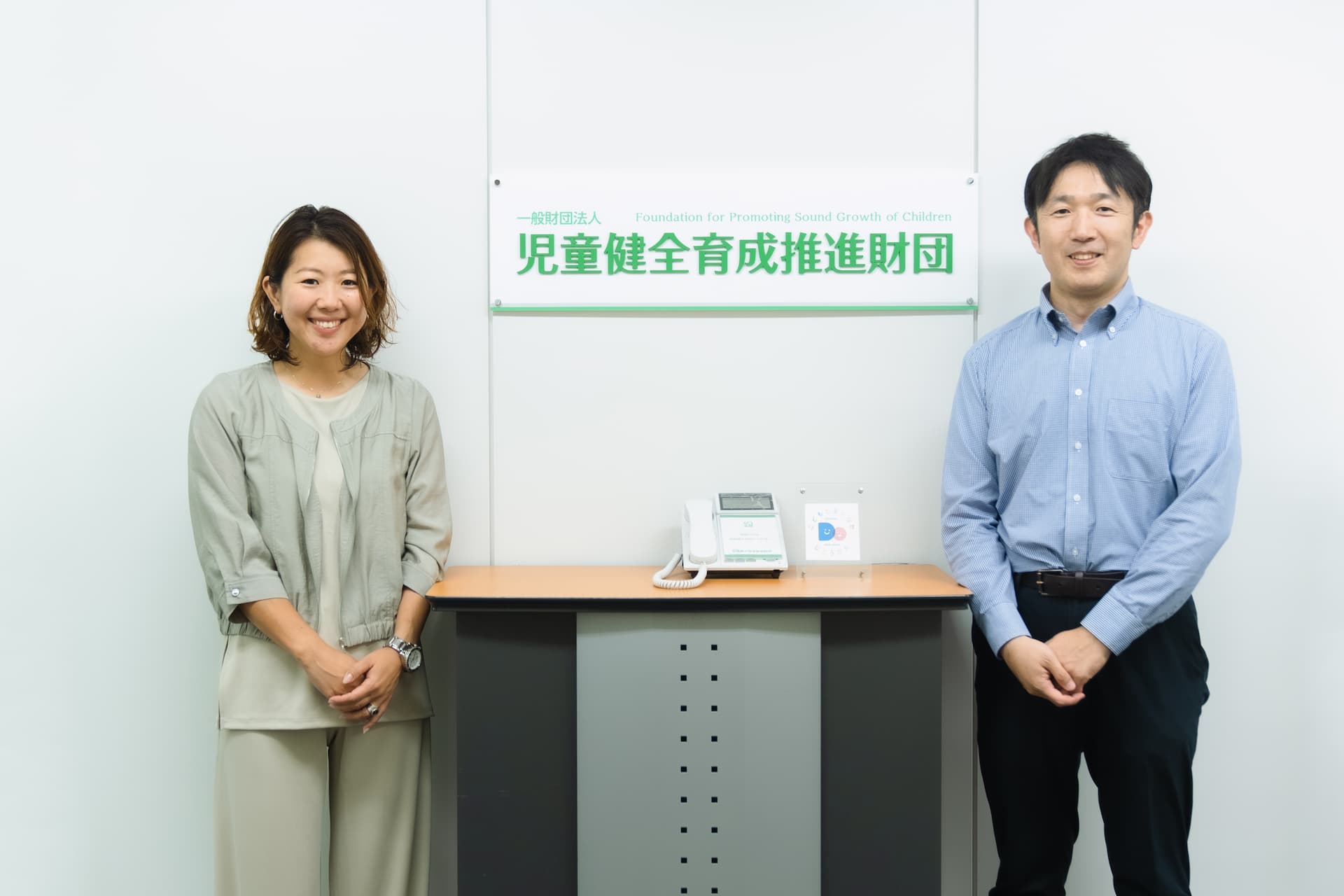
Left: Kaneko, Hitoshizuku
Right: Ryo Nataami, General Incorporated Foundation for Promoting Sound Growth of Children
Photography: Hiroyuki Horigome
RECENT WORKS
| Name | Hitoshizuku Inc. |
| Address | 33 Nihonodori Naka-ku Yokohama Kanagawa 231-0021 JAPAN |
| Branch | Hamacho Odawara Kanagawa 250-0004 JAPAN |
| Phone | 81 045 900 8611 |
| info@hitoshizuku.co.jp |
| President | Hiroshi Kokubo |
| Established | March 2016 |
| Capital | 3,000,000yen |
| Business | Advertising & Public Relations Agency Planning & Produciton of Social Good Projects |
| Lawyer | Junna Tei / Yokohama First Law Office |
| Tax Advisor | Satoru Motokoide / Uniques Money Advisory |
| Labor and Social Security Attorney Office Work Innovation | |

